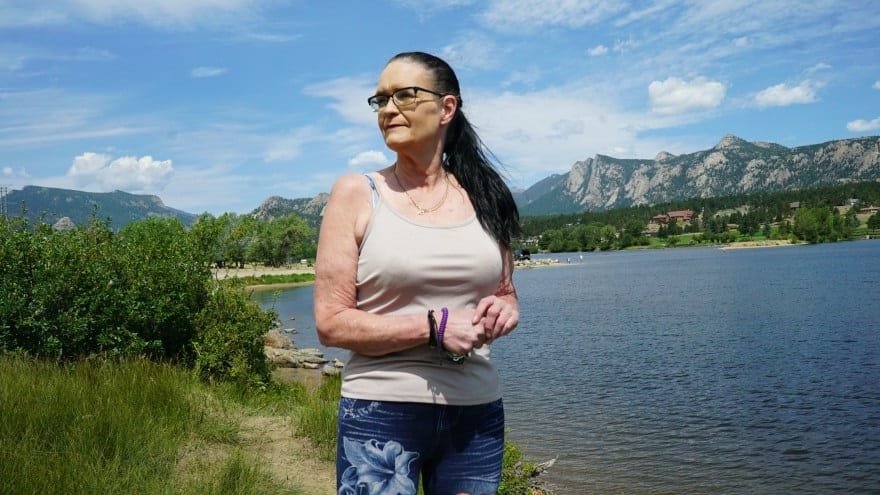America’s Race for Universal Telehealth May Rely on Making Medicare Payments Permanent
August 31, 2020 – Kimberly Sanders was recovering from a heroin addiction when the coronavirus struck. She had been homeless before and struggled to commute long distances for treatments. But because of her failure to attend several appointments, her previous doctors stopped seeing her. Years later,
Elijah Labby

August 31, 2020 – Kimberly Sanders was recovering from a heroin addiction when the coronavirus struck.
She had been homeless before and struggled to commute long distances for treatments. But because of her failure to attend several appointments, her previous doctors stopped seeing her.
Years later, in a bid to get clean, she moved to Estes Park, Colorado, and began attending a treatment program at Salud Family Health Center.
“It’s beautiful. It gets me away from the hustle and bustle of everything,” Sanders told KUNC, a radio station in Greeley, Colorado. “Estes Park is like a little bubble – a little protective bubble, and I like it.”
Then, because of the coronavirus, Salud began limiting in-person treatments.
“I didn’t know what we were going to do. I had no clue,” she said.
Sanders’ story is illustrative of the experiences of millions of Americans. And while America is racing to provide increasingly vital telehealth services universally during the coronavirus, there are still significant challenges with conducting telemedicine.
Fixes for permitting telemedicine during the coronavirus
In early March, Congress passed legislation that would temporarily allow patients in need to access telehealth services across state lines, as well as other key expansions.
The law, including as part of the Coronavirus Preparedness and Response Supplemental Appropriations Act, H.R. 6074, allows psychologists to treat patients from their homes, permits telehealth for Medicare recipients across the country and not just in underserved rural areas, and also allows nursing home patients to receive services via telehealth.
In August, President Donald Trump signed an executive order would allow individuals to pay for telehealth with Medicare in certain circumstances. It also directs task forces from the Departments of Agriculture and Health and Human Services to be created, and it calls for one of the FCC’s existing task forces to focus on telehealth.
The executive order was widely praised. At the Republican National Convention, Registered Nurse Amy Ford went so far as to say that Trump’s Executive Order would save lives.
“As a healthcare professional, I can tell you without hesitation, Donald Trump’s quick action and leadership saved thousands of lives during COVID-19,” she said. “And the benefits of that response extend far beyond coronavirus.”
The American Telehealth Association also praised the move, saying that it was a necessary step “to ensure individuals receive the care they need during this national health emergency.”
However, some worry that these expansions could leave millions unconnected when the virus is over.
“There is more work that needs to be done, on both the federal and state levels, to cement these gains and make permanent the waivers put in place in response to COVID-19,” said ATA CEO Ann Mond Johnson.
She said that while Trump’s Executive Order was a step in the right direction, continued work is needed to combat the coronavirus’s potential to harm vulnerable populations.
“The stresses on our healthcare system were well-documented prior to the pandemic – including crippling provider shortages, escalating costs, and an aging population – and will only be exacerbated as our nation begins to recover from this health crisis,” she said.
But Frank Micciche, vice president of public policy and external relations at the National Committee for Quality Assurance, thinks that telehealth legislation will continue to advance out of necessity.
“I think the Administration and even the private sector would have a really hard time going back to pre-COVID, Just because people on all ends of the system, providers, patients, you name it, have appreciated a lot of the benefits,” he said.
The future of telehealth after the pandemic ends
Companies like Teladoc, which partners with medical practitioners across a variety of disciplines, have become essential arbiters for providers historically unable to offer services across state lines.
A representative for Orlando Health Network said that they have advanced their remote services substantially during the coronavirus thanks to Teladoc.
“We deployed a dedicated COVID-19 screening and questions service on our Virtual Visit platform,” they said. “This was available to the community, as well as offered in partnership with several Central Florida employers to give patients 24/7 access to an Orlando Health physician for their questions about COVID-19. We have done over 60,000 virtual visits during COVID-19.”
The representative said Orlando Health is positive about the future of telehealth.
“We believe that consumer demand will drive the legislative environment and we are optimistic that coverage for telehealth services is here to stay,” they said.
However, while federal funding and legislative proposals are plenty, the future of telehealth is uncertain. It is unclear which, if any, broadband and telehealth stimulus bills will pass, and a unified national telehealth expansion effort down to the local level is unlikely.
Sanders said that the ease of access that remote health has afforded her will make it difficult to return to in-person appointments if inter-state telehealth provisions are not agreed upon.
“I just step to the back at work for about 15-20 minutes and then I’m back right at work,” she said. “I don’t want to have to go back to having to go in person.”










Member discussion